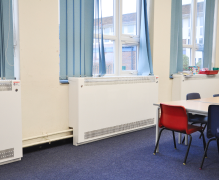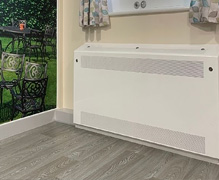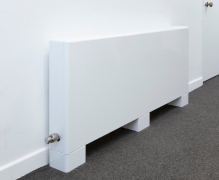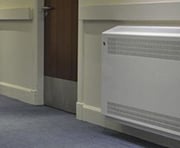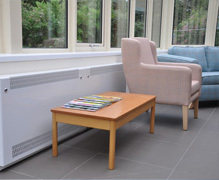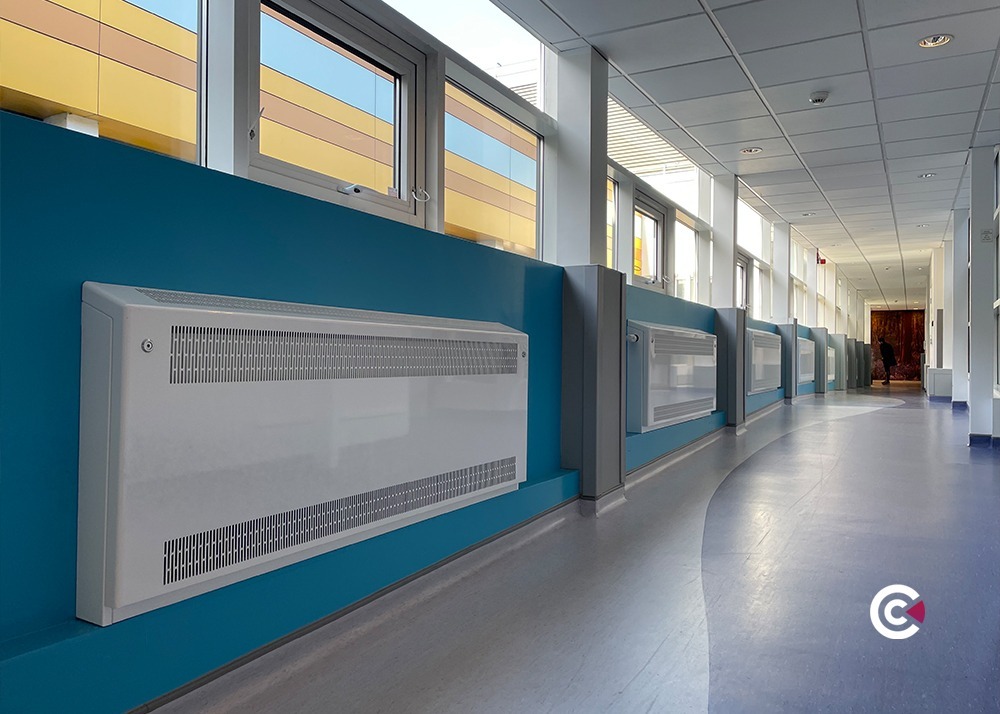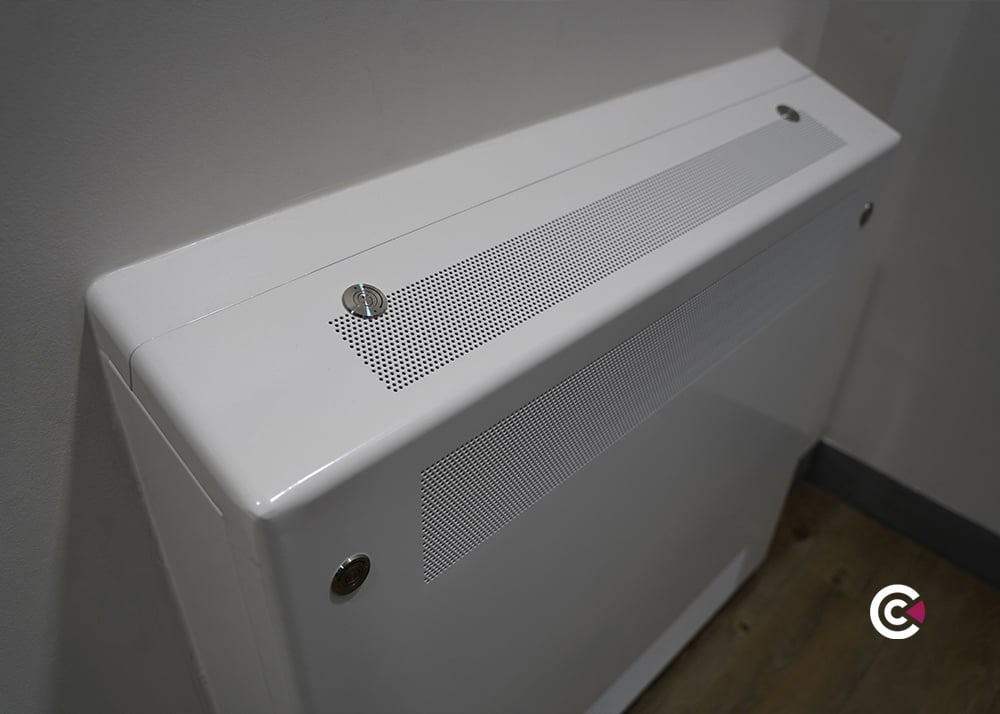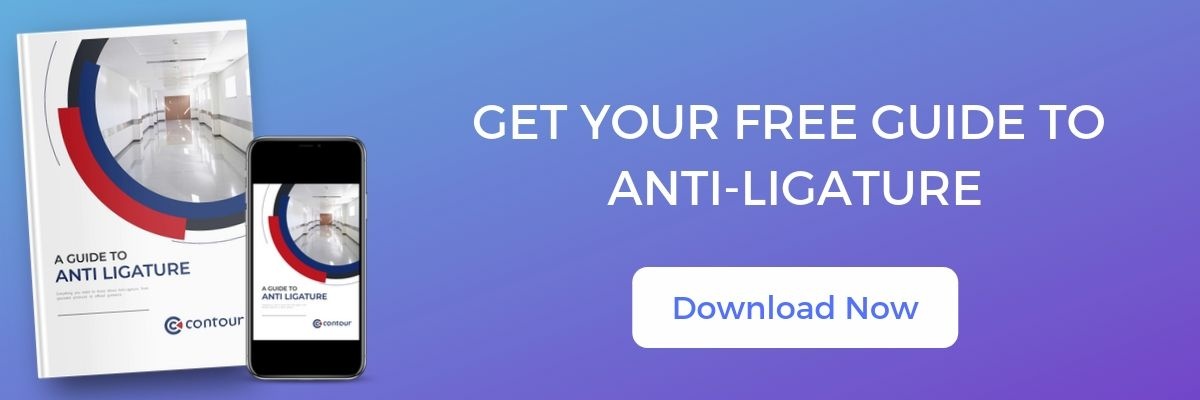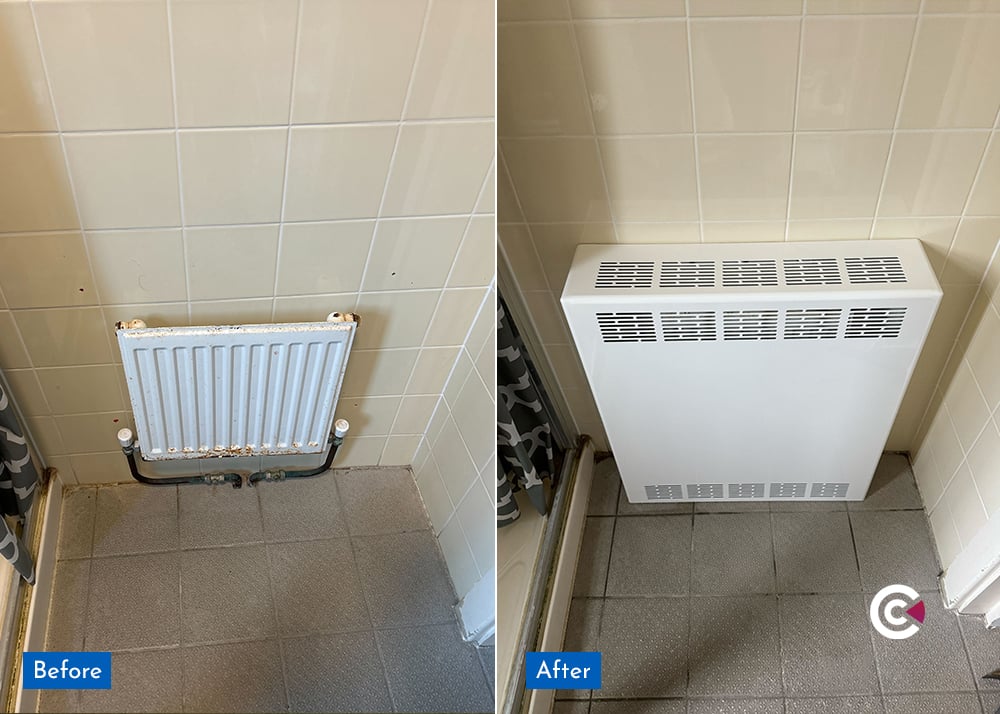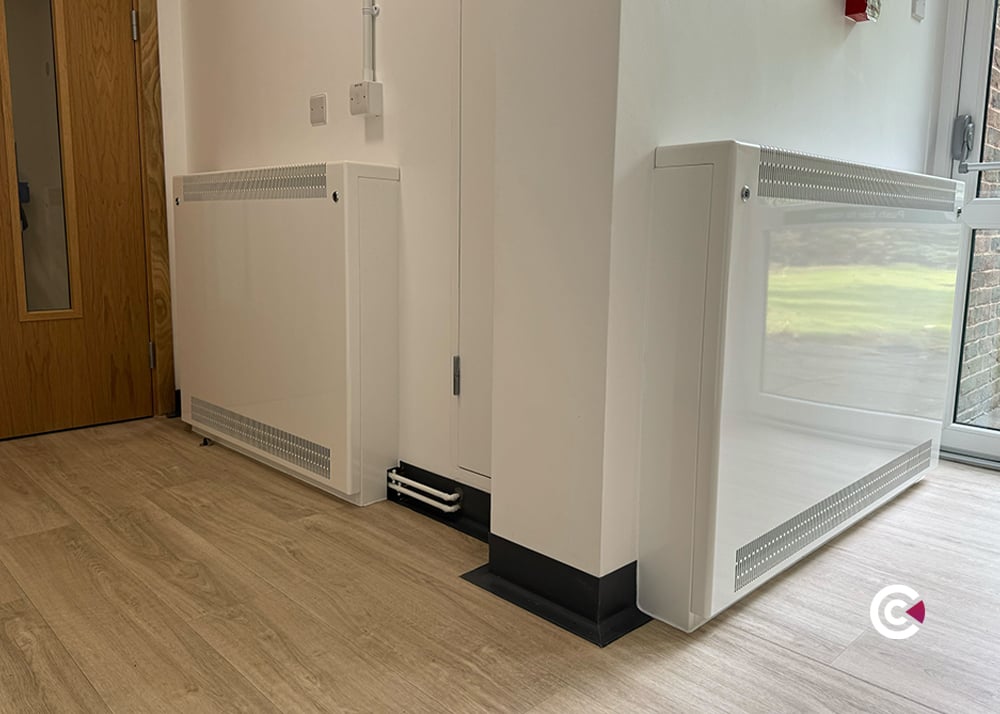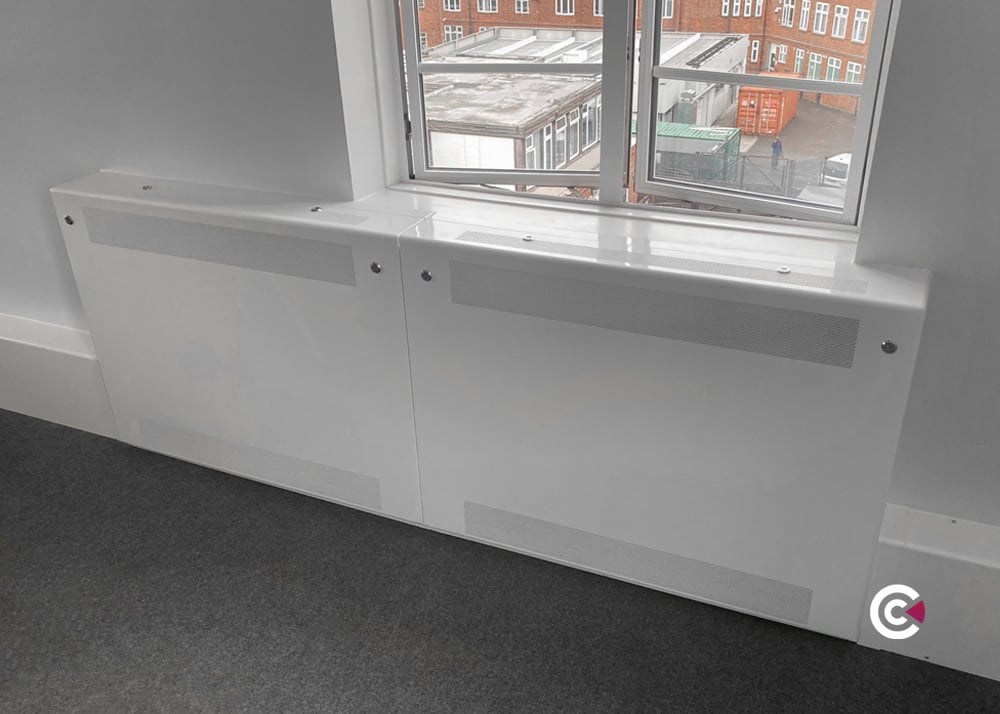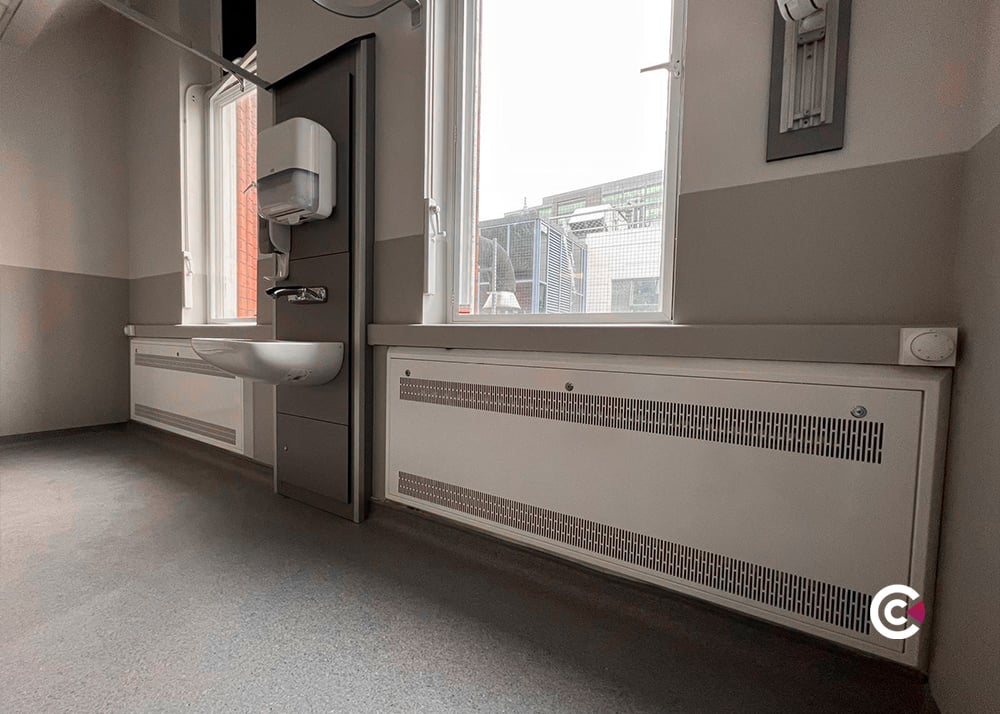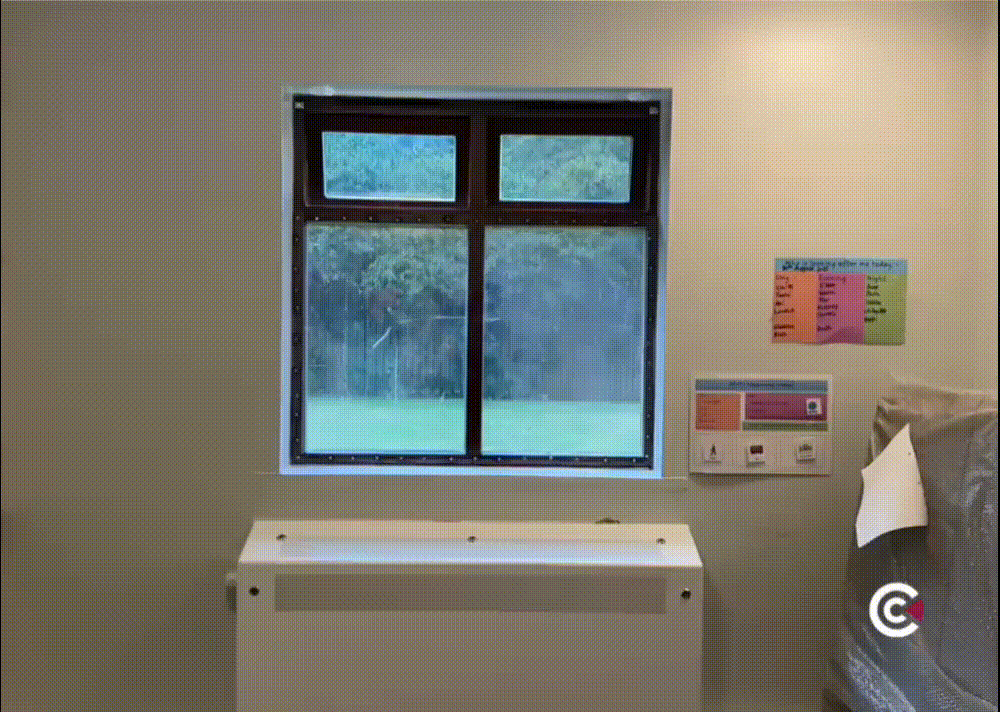Suicide statistics in mental health settings demonstrate that three-quarters of patients who kill themselves on a psychiatric ward do so by hanging or strangulation, prompting regulators to focus heavily on ligature risks.
Architects, specifiers and ward managers should closely observe any ligature risk- no matter how big or small-when redesigning or upgrading their facility.
Ligature Risks: Key Examples
Even the smallest risk must be identified, and measures put in place to minimise. Some examples of risks are as follows:
- Power cords on medical equipment
- Call bell cords
- Handrails
- Doors
- Doorknobs
- Door hinges and hardware
- Showerheads and curtains
- Exposed plumbing or piping
- Paper towel and soap dispensers on walls
- Electrical switches
- Lighting fixtures
- Projections from ceilings
Managing Identified Risks
It’s extremely difficult, and in some cases impossible, to completely remove ligature risks. Doing so may serve as a hindrance for employees carrying out necessary tasks, and for service users by taking away their rights of independence.
In managing risks, it is recommended that you take a ‘remove, replace, protect, or manage’ approach, as highlighted by The Nottinghamshire Healthcare NHS Ligature Risk Reduction Policy (2019)
Remove, Replace, Protect, Manage
|
Action |
Description/Definition |
|
Remove |
If the risk would leave the patients at risk, the ligature should be removed and there is no suitable alternative. |
|
Replace |
The ligature Is removed and replaced with a purposely designed similar anti-ligature piece of equipment. |
|
Protect |
Provide materials that hide the potential ligature. |
|
Manage |
There is a need to keep the risk because of the potential injury is greater than the potential of an attempted suicide, for example, grab rails within an elderly in-patient/dementia unit. |
Examples Of Ligatures and Ligature Point Risks To Consider
Before we head into the examples, it’s important to understand the distinction between ligatures and ligature points.
Ligature: Anything that binds or ties. Examples include: chains, linen, clothing, cords, tubing, etc
Ligature point: Anything that could be used to attach or secure a ligature. Examples include: shower rails, coat hooks, water pipes, door frames, etc.
|
Potential Ligatures and Ligature Points |
Potential Risk Control |
|
Bedsteads |
Should be appropriate to the environment |
|
Brackets, picture rails, ventilation grilles, ducts |
Brackets: remove, box in or chase into wall Grilles: perforations should be a maximum of 3mm in diameter |
|
Coat hooks |
Remove all hooks behind doors, in wardrobes, etc |
|
Curtain rails |
Collapsible rails and safety track |
|
Curtain tracking |
Avoid gaps in fixed tracking |
|
Curtain wires |
Avoid use of curtain wires |
|
Doors (closers, handles, frames) |
Careful consideration of design |
|
Electrical wiring |
Should be ‘chased’ into wall or fitted flush to wall |
|
Exposed pipework |
Consider height and accessibility |
|
Hinges |
Consider types of hinges and gaps between doors and frames |
|
Light switch cords |
Should not be nylon. Consider solid pull cords or infra-red automatic switches Consider anti-ligature light switch covers |
|
Patient’s lockers/wardrobes |
Remove hanging rails |
|
Radiators |
Consider boxing in with appropriate covers |
|
Wardrobes |
Consider design (handles, internal hooks, door closing etc) |
|
Window and window openings |
Consider handles, trickle vents, hinges |
|
Window and door weatherproof seals |
Consider ligature points |
|
Sink taps, plugs |
Consider ligature points |
|
Smoke detectors |
Consider ligature points or appropriate covering |
When assessing ligature risks, consider the use of the outdoor environment too. Anchor points in the garden may include windows, drainpipes, fencing, and trees.
Conclusion
We hope that this blog will enable you to identify and list all potential ligature points within your working environment that are accessible to Service Users.
Contour’s range of anti-ligature products are designed to help minimise the risk of self-harm and suicide in mental health settings, providing Service Users with a safe and secure environment.
If you’d like to learn more about how we work with mental health settings to reduce ligature risks, fill out the form below.
About Us
Contour produces a range of innovative, safe surface temperature systems for healthcare, education, mental health, commercial and secure sectors, working in close partnership and collaborating with architects, M&E engineers, NHS Trusts, local authorities, design consultants and contractors to deliver outstanding safe heating solutions.
Contour is the exclusive partner of BioCote® anti-microbial technology for LST and anti-ligature radiators. BioCote® additives reduce bacteria by up to 99.9%. Contour combines an extensive range of colour-paints is with BioCote® for a durable, high-quality finish.
Contour’s heating solutions offer secure, single-person quick access to radiator guard interiors for regular deep cleaning and maintenance. Each year, Contour save the NHS millions of pounds in cleaning costs, therefore delivering.
-1.png)


